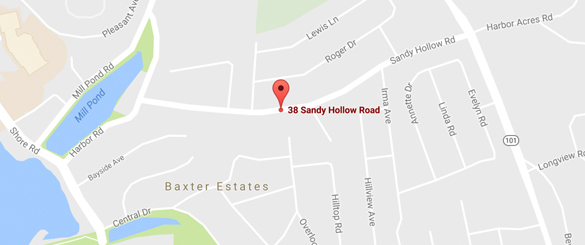State grants extension allowing for needed time to construct 1,4-dioxane treatment systems
Prepare to reduce irrigation 20% to meet District’s goal of keeping impacted wells offline until treatment is completed
The Port Washington Water District (PWWD) has received a compliance deferral from New York State, which will allow the District the needed time to design and construct the treatment systems to remove 1,4-dioxane. The State will only grant the two-year compliance deferral to water providers that have an action plan to construct advanced oxidation process (AOP) treatment system, which is required to meet the State’s new maximum contaminant level (MCL) for 1,4-dioxane.
“The District’s goal is to keep the impacted wells offline by requiring the community to reduce irrigation by 20% while we work aggressively to get the needed treatment systems up and running,” stated David Brackett, Chairman of the PWWD. “The compliance deferral is a proactive measure reserved for extreme weather or emergency circumstances. However, if we are to meet the water needs of our community during the hotter months—while simultaneously keeping wells offline to construct required treatment—the Port Washington community must reduce irrigation usage by 20 percent.”
On August 26, 2020, the New York State Health Department finalized regulations establishing MCLs for 1,4-dioxane at 1 part per billion (ppb). Currently, three of the District’s 12 supply wells have had detections of 1,4-dioxane at or above 1 part per billion. According to the New York State Health Department, “The MCLs are set well below levels known to cause health effects in animal studies. Therefore, consuming water with PFOA, PFOS or 1,4-dioxane at the level detected does not pose a significant health risk. Your water continues to be acceptable for all uses.”
“Extensive analysis went into creating a water resource management plan for this summer that manages our limited capacity,” stated Commissioner Mindy Germain. “It is important that residents start taking steps now to prepare to reduce irrigation.”
“We are alerting you now to provide plenty of time to advise contractors, consider landscaping choices and consider applying for a smart irrigation controller rebate, stated Commissioner Peter Meyer.
A winter mailing will go out to all customers of the PWWD with detailed instructions to:
- Turn back watering times for each zone by four minutes as it will help save up to 20 percent on overall usage.
- Addresses that fall within a particular geographic zone are required to follow the time schedule for automatic irrigation system watering established within that specific zone (SEE MAP)
- Check for leaks or broken sprinkler heads that waste water unnecessarily.
- Ensure that irrigation clocks are adhering to Nassau County’s Odd/Even Lawn Watering Ordinance (see next page for more details).
- Ensure automatic rain and soil moisture sensors are working properly.
- Consider installing a smart irrigation controller. The District has $150 rebates available to residents who make the switch.
- Make good landscaping choices, such as integration of native/drought resistant plans and xeriscaping, as this will lead to lower water usage.
To learn more about the compliance deferral and the proactive steps the District has and continues to take to address the detection of these contaminants, please visit www.pwwd.org. If you would like a printed copy of the deferral notice, please call the District at 516-767-0171 or send an email to info@pwwd.org. To access new irrigation requirements, as well as tools and resources, please visit www.pwwd.org/conservation.
MORE ABOUT THE TREATMENT:
AOP treatment, when coupled with granular activated carbon (GAC), is currently the only approved method in Nassau County to rid the water supply of 1,4-dioxane. This treatment combination is also capable of removing perfluorooctanoic acid (PFOA) and perfluorooctanesulfonic acid (PFOS), should detections of these contaminants ever near the State’s new maximum contaminant levels (MCLs). AOP treatment works by mixing an oxidant, in this case hydrogen peroxide, with water and running it through ultraviolet light. This makes a chemical reaction that destroys the 1,4-dioxane molecules. The water then runs through the GAC filters which removes any remaining hydrogen peroxide and impurities prior to entering the public distribution system.




